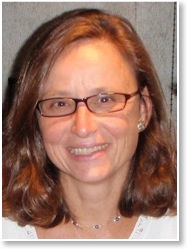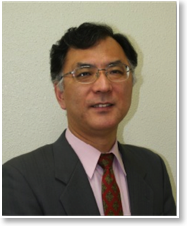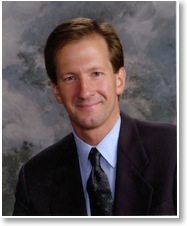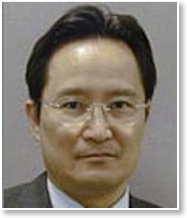Keynote Speakers
ZOYA POPOVIC

University of Colorado
Title
Far-field wireless power delivery and power management for low-power sensors
Abstract
This talk will present an overview of a system for wireless far-field powering of unattended distributed wireless sensors, including the power reception device design and optimization, power transmission, power management and control. Design and measured data of implementations of the various parts of the system in the 2GHz cellular and 2.45GHz unlicensed bands will be shown. A design methodology for antennas integrated with rectifiers (rectennas) optimized for efficiency at low incident power levels (5-100uW/cm2) will be presented. Integration of rectenna elements and arrays with the electronic application (wireless sensing in this case) requires power management, and some approaches that consume very low power levels will be presented. Possible applications such as sensors for comfort, performance and security of commercial and residential buildings will be discussed.
Biography
Zoya Popovic is a Distinguished Professor and Hudson Moore Jr. Endowed Chair in the Department of Electrical, Computer and Energy Engineering at the University of Colorado, Boulder, U.S.A. She received her Dipl. Ing. degree from the University of Belgrade, Serbia, in 1985, and the M.S. and Ph.D. degrees from Caltech, Pasadena, California, in 1986 and 1990, respectively. She was a visiting professor at the Technical University of Munich, Germany, in 2001 and 2003, and was elected a foreign member of the Serbian Academy of Sciences and Arts. Her research interests include high-efficiency, low-noise and broadband microwave and millimeter-wave circuits and sub-systems, quasi-optical millimeter-wave techniques for imaging, smart and multibeam antenna arrays, RF optics, and wireless powering for batteryless sensors. She has received two IEEE MTT-S Microwave Prizes for best journal papers in 1993 and 2005, the 2001 ASEE HP/Terman Award for combined teaching and research excellence, and the 1996 URSI Issac Koga Gold Medal. She was named a White House NSF Presidential Faculty Fellow in 1993 and a Fellow of the IEEE in 2002. She has graduated 45 PhDs and currently supervises 15 doctoral students. She has a husband physicist and three daughters who can all solder.
SHIGEO KAWASAKI

Japan Aerospace Exploration Agency, IEEE MTT-26 Chair
The green energy harvesting wind by the RF/Microwave power transmission
Abstract
Researchers around the world have started developing green wireless energy/power technology, focusing on environmental issues, human–nature interactions and cost-effectiveness. This technology is called as “the wireless energy transfer and conversion”. Recently, the wireless energy transfer and conversion has been defined as the combination of wireless power transmission (WPT) and energy harvesting/scavenging. The winds of green energy harvesting using the RF/microwave power transmission have blown. The wireless energy transfer and conversion has the following technological aspects: 1) the received and harvested RF/microwave power is converted into DC power which is used to operate electric circuits and mechanical equipment and 2) harvested energy from thermal, mechanical, and RF environments is converted into DC power to operate electric and RF/microwave circuits. In this talk, in addition to a category of the wireless energy transfer and conversion, an overview of the development and application of WPT and energy harvesting technologies that use the received/harvested microwave power indicated above are given and selected research results will be presented.
Biography
Dr. Shigeo Kawasaki received the B.S. and M.S. degrees in electrical engineering from Waseda University in 1979 and 1981, respectively and Ph.D. degree in electrical engineering from University of California, Los Angeles (UCLA) in 1993. From 1994, he joined in Tokai University, Japan. In 1997, he was the invited visiting Scholar at UCLA and, in 1999, the invited visiting Professor at California Institute of Technology, respectively. In 2004, he joined as the Special Project Professor in the Research Institute for Sustainable Humanosphere, Kyoto University, Japan. From 2008, he has joined as the Professor in Institute of Space and Astronautical Science (ISAS), Japan Aerospace Exploration Agency (JAXA). His research activities include microwave and millimeter-wave wide-band gap power devices and circuits, RF-MEMS, active integrated antennas, nonlinear active device modeling, PA/LNA MMICs, active phased array antennas and the wireless energy transfer technology.
KAMIL GRAJSKI

Qualcomm, USA & Alliance for Wireless Power, USA
Title
Introduction to the Alliance for Wireless Power (A4WP) Flexibly Coupled Wireless Power Transfer (WPT) System Baseline System Specification (BSS)
Abstract
Loosely-coupled, or flexibly-coupled wireless power transfer (WPT) technology offers unique, next-generation improvements in user experience, and product design and innovation towards the vision of ubiquitous power and infinite stand-by time for a wide range of portable consumer electronic devices. Our keynote address at IMWS-IWPT 2012 in Kyoto described the physics of loosely-coupled WPT, discussed general approaches and challenges in implementing WPT electronic circuits, and considered how industry can move toward timely, high-quality WPT technical standards. This talk will provide a commercial WPT case study in the form of an introduction to the A4WP baseline system specification. Topics to be discussed include high-level requirements, device classification, general system requirements (including resonator requirements for the power transmitting and power receiving units), the power control specification, the signaling specification, and the framework for certification and acceptance testing through the application of reference power transmitting unit resonators and reference power receiving units.
Biography
Kamil is an Engineering VP with a portfolio of projects including WPT technical standards and WPT ecosystem development. Kamil is President of the Alliance for Wireless Power and holds other Chair positions in regional and international WPT-related standards development fora. Previously, Kamil was Engineering VP on the SnapTrack team (acquired by Qualcomm in 2000) that developed award-winning Assisted GPS technology for Location-Based Services beginning with E-911 in USA, and that has evolved into a multi $B global hardware and applications business. He received his undergraduate degree in Computer Science from New York University; and a Biophysics Ph.D. from the University of California, Berkeley.
Special talk and Exibition
Takashi Ohira

Toyohashi University of Technology
Title
Via-Wheel Power Transfer to Vehicles in Motion
Abstract
Electric vehicles (EVs) are strongly expected as a drastic green innovation to replace conventional gasoline engines. Unfortunately for the moment, EVs are not so widely used. This is because of their short cruising distance, long charging time, high cost, and heavy weight. These are all due to the bulky batteries onboard. Indeed chemical engineers are attempting to improve battery performance, we still need a breakthrough for this problem. As possible Maxwellian solutions, wireless feeder approaches have been recently taken for EVs exploiting magnetic coupling between two coils: one on the road and another onboard. Still however, the two coils must be put at exact places having a common axis to keep a high power-transfer efficiency. This implies mainly standing applications, not always optimal for powering while running. This lecture explores an emerging scheme stemming from a very different aspect. We focus on the steel belt usually built in a tire for vehicles. It can collect RF displacement current if another electrode is buried beneath the road by analogy to an overhead wire for railways or trolleys. Since the tire always surely touches on the road surface, it could be an ultimate wireless power transfer scheme. We call this scheme V-WPT or Via-Wheel Power Transfer. Being free from air gap (zero-gap coupling) unlike the twin coils, high dielectric constant of the tire permits high efficiency displacement current with much less electromagnetic field leakage to outside than trans-air-gap schemes. In a meaning, this is similar to electric railway, which is powered even during in motion. If EVs can employ such a feeding system, they have significant advantages of long cruising, no charging time, and lightweight. You may doubt such a scheme is really feasible. We answer yes by proposing its concept as well as bringing a prototype demonstration featuring a spectacular scale model of running car to exhibit in the plenary hall of the conference.
Biography
Takashi Ohira received the DE degree from Osaka University Japan in 1983. He worked on GaAs MMICs for satellite transponders at NTT Yokosuka Laboratories Japan. From 2005, he was Director of ATR Wave Engineering Laboratories Kyoto Japan. He is Professor of Toyohashi University of Technology. He is working on unified theory of Q factors in resonators and oscillators. He is also establishing an RF powering technology for running electric vehicles. Prof. Ohira was awarded the 1986 IEICE Shinohara Prize, the 1998 APMC Prize, the 2004 IEICE Electronics Society Prize, and the 2012 CEATEC Semi Grand Prix. He serves as Chair of IEICE Microwave Technical Committee, and IEEE Distinguished Microwave Lecturer. He is an IEEE Fellow. He founded two regional chapters in IEEE MTT Society: Kansai Chapter in 2006 and Nagoya Chapter in 2010. He is an award councilor for European Microwave Association.

